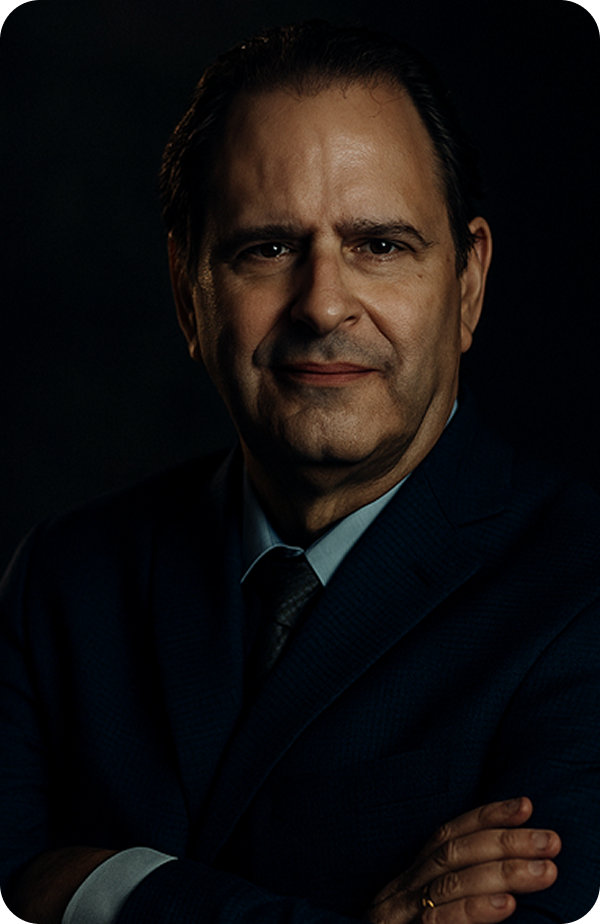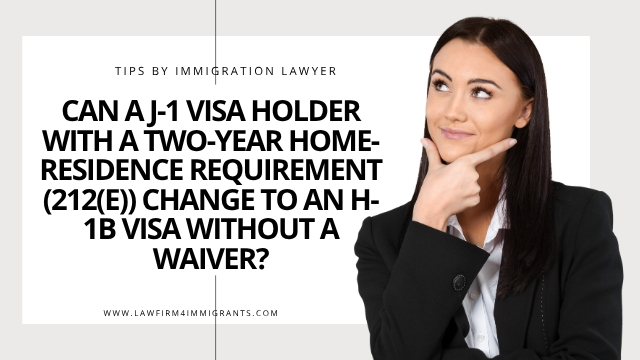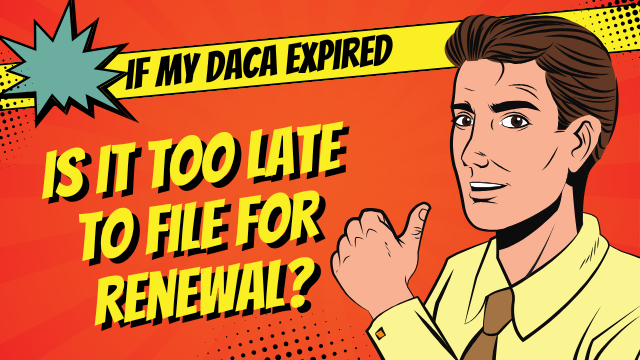By Richard T. Herman
Herman Legal Group – Cleveland & Columbus, Ohio
Book a Consultation →
Quick Answer (At a Glance)
Short Answer:
No — if you are subject to the two-year home-residence requirement under INA § 212(e) as a holder of a J-1 visa, you generally cannot change status to an H-1B visa while in the U.S. until you either fulfill the requirement or obtain a waiver.
The two-year home-residence requirement must be fulfilled or waived before a J-1 holder can access immigration benefits such as H-1B status.
Even if your employer submits an H-1B petition and you are selected in the lottery, USCIS will not approve a change of status until that requirement is resolved.
Need to Know:
If you file an H-1B change of status while still subject to 212(e), your case will likely be denied under USCIS Policy Manual, Vol. 2, Part D, Ch. 5.

1. Understanding the J-1 Two-Year Home-Residence Requirement
What Is § 212(e)?
Under INA § 212(e), certain J-1 exchange visitors must return to their home country (or last legal permanent residence) for two years after completing their program before they can change status or apply for H-1B, L, K, or immigrant visas. This two-year home residency requirement applies to J-1 visa holders who receive funding from their home country government or the U.S. government as part of their J-1 program.
You may be subject to 212(e) if:
- Your program was funded (in whole or part) by the U.S. government or your home government.
- You trained in a medical or clinical program in the U.S. (graduate medical education), which also subjects you to the two-year home residency requirement.
- Your field is listed on your country’s Exchange Visitor Skills List as a critical area of need. The Skills List applies to certain countries, and updates to the list can affect which countries’ nationals are subject to the requirement.
Expert Tip:
This rule applies even if you later switch to another visa; it remains a lifetime bar until it is either fulfilled or waived.
How to Know if You’re Subject to 212(e)
- Check your J-1 visa stamp — look for the notation: “BEARER IS SUBJECT TO SECTION 212(e). TWO-YEAR RULE DOES APPLY.” U.S. authorities determine whether you are subject to 212(e) based on your program details.
- Review your Form DS-2019 — your sponsor may indicate whether the rule applies.
- Request an Advisory Opinion from the U.S. Department of State Waiver Review Division if uncertain. The advisory opinion is used for determining your subjectivity to the requirement.
Fast Fact:
Even if your DS-2019 does not mention the requirement, you could still be subject — always confirm through an advisory opinion.
2. Why the Two-Year Rule Blocks an H-1B Change of Status
If you are subject to 212(e), you cannot change your status to H-1B, L-1, or permanent residence while in the United States, and you are also ineligible for certain immigration benefits until you fulfill or waive the requirement. The two-year home residency rule applies to multiple nonimmigrant classifications, not just H-1B. You can, however, still apply for an H-1B petition — but it will not be approved or activated until you meet or waive the requirement.
Important Note:
This restriction applies both to change of status and to consular visa issuance. Even if USCIS approves your petition, the Department of State will refuse to issue the visa until 212(e) is resolved.
Change of Status vs. Consular Processing
| Option | Permitted While 212(e) Applies? | Notes |
|---|---|---|
| Change of status inside the U.S. | ❌ No | Must fulfill or waive 212(e) first. |
| H-1B via consular processing | ❌ No | Waiver or completion of 2 years required before visa issuance. |
| Other visas (such as H, L, K visas, immigrant) | ❌ No | Also blocked under 212(e); any person subject to 212(e) is affected by these restrictions. |
| Diplomatic (A, G) visas | ✅ Limited | Certain exceptions for diplomats and international org. staff. |
Key Insight:
The two-year requirement acts as a statutory bar, not just an administrative preference.
Why It Exists
The home-residence rule ensures that exchange visitors return home and share skills gained in the U.S. It’s meant to promote international cooperation — not to punish participants. The two-year home residency requirement is a key feature of J status, designed to support the exchange program’s goals by encouraging knowledge transfer to the participant’s home country.
However, it often creates hardship for foreign professionals offered long-term U.S. employment, who may need additional support to navigate the complexities of this rule.
3. How to Overcome the 212(e) Barrier
Option 1: Fulfill the Two-Year Home-Residence Requirement
You can satisfy 212(e) by residing in your home country or country of last legal permanent residence for at least two years after completing your J-1 program.
- It does not have to be continuous, but must total at least two years.
- During that time, you cannot reside in the U.S. or a third country.
- After completion, you may freely apply for H-1B, immigrant visas, or adjustment of status.
Important Note:
You must show physical presence proof (passport entries, employment, etc.) if USCIS requests evidence.
Option 2: Obtain a J-1 Waiver
The alternative is to apply for a waiver through the Department of State Waiver Review Division and USCIS. The waiver for the two-year home residency requirement must be recommended by the U.S. Department of State (a waiver recommendation) and approved by USCIS. Obtaining the requirement waived involves following specific procedures, including submitting the necessary forms and supporting documentation.
There are five legal bases for waiving the two-year requirement:
- No-Objection Statement (NOS):Your home government issues a statement saying it has no objection to you remaining in the U.S. permanently or working under H-1B.
- File Form DS-3035 with DOS.
- Requires your home embassy’s cooperation.
- Not available to U.S. government–funded exchange visitors.
- Interested Government Agency (IGA) Request:A U.S. federal agency (e.g., NIH, NASA, DOD) or other government agencies can request that DOS grant you a waiver because your continued U.S. presence serves the national interest.
- Persecution Waiver:If you can prove that returning home would subject you to persecution based on race, religion, or political opinion.
- Exceptional Hardship Waiver:If returning home would cause exceptional hardship to your U.S. citizen or lawful permanent resident spouse or child.
- Conrad 30 Waiver (Physicians Only):For foreign medical graduates who complete graduate medical training in the U.S. and agree to work for three years in an underserved area designated by HHS or state agencies. The requirement may be waived for these physicians, and the process involves coordination with the Educational Commission for Foreign Medical Graduates (ECFMG).
Processing Time:Expect 6–18 months depending on the waiver category and your nationality. Processing times may vary for foreign medical graduates.
Fast Fact:
The Conrad 30 program remains a primary route for foreign physicians transitioning from J-1 to H-1B in 2025.
4. Can You File an H-1B Petition While 212(e) Still Applies?
Yes, but with limitations.If you are a J-1 exchange visitor, your employer may file an H-1B petition to secure a cap number, but USCIS will not approve change of status or allow you to start H-1B employment until the Two-Year Home Residence Requirement under 212(e) is fulfilled or waived.
Example:You are selected in the FY 2026 H-1B lottery. If your waiver is not approved by October 1, 2025, your petition remains pending or is denied until you submit the DOS waiver approval notice.
Key Insight: Filing early gives your employer flexibility but doesn’t override the statutory bar.
Official Policy Confirmation
5. Practical Alternatives While Awaiting Waiver or Two-Year Service
1. Return Home to Fulfill the Requirement
If your waiver path seems uncertain, returning home to complete the two years may be the cleanest legal path to future H-1B or green card eligibility.
2. Work Abroad for the Same Employer
Some multinational employers allow you to work from your home country during the two-year period, then transfer you back under H-1B once satisfied.
3. Explore Cap-Exempt H-1B Options
Universities, nonprofit research institutions, and affiliated hospitals may file H-1B petitions exempt from the annual cap. These cases are not automatically exempt from 212(e), but such employers often have experience navigating these transitions.
4. Pursue Alternative Visa Categories
If qualified, consider O-1 (“extraordinary ability”), A or G visas, or TN (for Canadians/Mexicans). These categories sometimes bypass standard H-1B timing but still require addressing 212(e) before permanent residence. See below for more info.
5. Marriage-Based Waiver Strategies
If married to a U.S. citizen or LPR, consider the exceptional hardship waiver — showing that your spouse or child would suffer if you had to return home.
Need to Know:
You must prove exceptional, not routine, hardship.
6. Case Studies (2025 Context)
Case 1: J-1 Research Scholar from India
A J-1 research scholar funded by both a U.S. university and India’s Department of Science & Technology is subject to 212(e). Her private-sector employer files H-1B in March 2025. She must first obtain a no-objection waiver through India’s Ministry of Education before USCIS will approve her H-1B change of status.
Case 2: J-1 Physician – Conrad 30 Waiver
A J-1 physician finishing residency in 2025 obtains a Conrad 30 waiver by agreeing to work in an underserved Ohio county for three years. The waiver allows him to change status to H-1B and begin employment immediately after waiver approval.
Case 3: J-1 Teacher from Eastern Europe
A teacher sponsored by a U.S. government exchange program is ineligible for a no-objection waiver. She completes her two-year service in her home country and later secures H-1B sponsorship abroad.
Fast Fact:
In 2025, average waiver processing times are 9–12 months, depending on home government response times and DOS workload.
7. Common Mistakes to Avoid
- Filing a Change of Status Before Waiver Approval: USCIS will deny; you lose time and filing fees.
- Assuming a No-Objection Waiver is Guaranteed: Some governments (e.g., India, China) routinely refuse if the J-1 was publicly funded.
- Overlooking Dependent Restrictions: Your J-2 spouse may also be bound by 212(e) and cannot change to H-4 or H-1B until resolved.
- Neglecting Timing: If you expect H-1B to start October 1, file the waiver no later than early winter of the prior year.
- Failing to Track Case Status: Always monitor your DS-3035 case status online. Consulting with an immigration attorney is often recommended to navigate the waiver application process due to its complexity.
8. Alternative Visa Options When You’re Still Subject to the J-1 Two-Year Rule (212(e))
For some professionals who are still bound by the two-year home-residence requirement under INA § 212(e), transitioning directly to H-1B is legally blocked.
However, depending on your current visa classification, a few alternative visa categories may offer lawful pathways to continue working in the U.S. while you pursue your waiver or complete your two-year period abroad. Recent policy updates have also impacted J-1 visa holders from several countries, making certain options more accessible for those individuals.
A. The O-1 Visa for Individuals of Extraordinary Ability
The O-1 visa is often the most practical workaround for J-1 holders who cannot yet change status to H-1B because of § 212(e).
Eligibility Overview
The O-1 is reserved for individuals who have demonstrated extraordinary ability in their field—such as:
- Science, education, business, or athletics (O-1A)
- Arts, motion picture, or television (O-1B)
You must prove sustained national or international acclaim through:
- Major awards, publications, or professional recognition
- Membership in elite associations
- Original contributions of major significance in your field
- Evidence of judging others’ work, media coverage, or critical roles
Fast Fact:
Many post-doctoral researchers, startup founders, and specialized professionals qualify for O-1A long before meeting H-1B caps or J-1 waiver timing.
Does 212(e) Block the O-1?
Technically, **§ 212(e)**does not prevent you from obtaining an O-1 visa, but it does bar a “change of status” inside the U.S.That means:
- You cannot change from J-1 to O-1 inside the United States while still subject to 212(e).
- You can apply for an O-1 visa abroad, at a U.S. consulate, and re-enter under O-1 status — even without completing or waiving 212(e).
In practice:
- Your O-1 petition is filed by your U.S. employer and processed by U.S. immigration services (USCIS), which reviews and approves the petition.
- You depart the U.S., attend your O-1 visa interview abroad, and upon issuance, re-enter to start your O-1 employment.
- You still remain subject to 212(e) — meaning you cannot apply for permanent residence (green card) or H-1B change of status until the requirement is fulfilled or waived.
Important Note:
The O-1 offers temporary employment continuity, not a permanent waiver of the two-year rule.
Why O-1 is a Strategic Bridge
| Feature | O-1 Visa | H-1B Visa | Notes |
|---|---|---|---|
| Subject to annual cap? | ❌ No | ✅ Yes | O-1 available year-round |
| Requires prevailing wage? | ❌ No | ✅ Yes | Greater employer flexibility |
| Dual intent allowed? | ⚠️ Limited | ✅ Yes | Can’t file green card until 212(e) resolved |
| Change of status possible from J-1? | ❌ No | ❌ No | Must apply at consulate |
| Duration | 3 years + extensions | 3 + years + extensions | Renewable indefinitely |
Key Insight:
The O-1 can serve as a temporary bridge visa for J-1 holders with exceptional qualifications who want to remain employed in the U.S. while awaiting a J-1 waiver or completing their two-year stay.
Example Scenario
A biomedical researcher on a J-1 visa with U.S. government funding is subject to 212(e).
Her employer sponsors an O-1A petition citing her publication record and national awards.
She departs for Canada, secures her O-1 visa at the consulate, and returns to continue her project—remaining subject to 212(e) but legally working in O-1 status until her hardship waiver is approved.
Expert Tip:
Filing an O-1 can buy you time while pursuing a hardship or no-objection waiver without interrupting your research or professional projects.
B. Diplomatic and International Organization Visas (A & G)
If you work for or are sponsored by an embassy, consulate, or international organization such as the UN, World Bank, or WHO, you may qualify for A- or G-category visas, which are not restricted by 212(e) for employment purposes.
However, these are highly specific and apply only to those directly engaged in official capacities.
C. Canadian or Mexican Nationals – TN Visa Route
If you are a Canadian or Mexican citizen, the TN visa under the USMCA (formerly NAFTA) allows you to work in a listed professional occupation.
Similar to O-1, you cannot change from J-1 to TN inside the U.S. while subject to 212(e), but you can apply abroad and re-enter under TN status.
Need to Know:
TN eligibility depends on your degree and job title matching one of the approved professional categories in the treaty.
D. Short-Term Academic or Research Visas (B-1, B-1 in lieu of H-1B)
Some researchers or lecturers may temporarily enter under a B-1 in lieu of H-1B classification for short-term academic projects, conferences, or consultations while awaiting their waiver.
These are strictly nonimmigrant, short-term, and require careful structuring with counsel to avoid misrepresentation.
E. Remote Work Abroad for a U.S. Employer
In today’s hybrid world, some J-1 holders complete the 212(e) requirement by working remotely from their home country for their future U.S. sponsor during the two-year period.
This satisfies the physical-presence requirement while maintaining professional continuity and employer ties.
At a Glance:
- ✅ Fulfills 212(e) two-year residence requirement
- ✅ Maintains U.S. employer relationship
- ⚠️ May affect U.S. payroll/tax rules (consult counsel)
Bottom Line
While the H-1B visa remains the most common path for long-term employment, the O-1 visa can be a critical bridge option for highly qualified individuals still constrained by the J-1 two-year rule.
It allows you to lawfully work in the U.S. through consular processing, without violating 212(e), while maintaining a professional foothold until your waiver or home-residency fulfillment clears the path for H-1B or green card eligibility.
Expert Tip:
If your resume includes advanced degrees, published research, patents, or leadership in your field, discuss the O-1 option with your immigration lawyer early — ideally 6–8 months before your J-1 program ends.
It can preserve your U.S. career trajectory without violating immigration law.
9. Legal References & 2025 Policy Notes
- USCIS – J-1 Waiver Overview
- U.S. Department of State – Waiver Review Division
- USCIS Policy Manual Vol. 2, Part D
- 8 U.S.C. § 1182(e)
- Conrad 30 Program Overview (HHS)
- Nationality Act – provides the broader legal framework governing nationality and citizenship issues, including the two-year home-residence requirement
10. Comparison of Top Law Firms Handling J-1 Waiver → H-1B Cases
| Law Firm | Locations | Practice Strengths | Distinguishing Feature |
|---|---|---|---|
| Herman Legal Group | Cleveland & Columbus, OH (National) | J-1 waivers, H-1B transitions, physician immigration | 30 + years experience; multilingual staff; national reach |
| Fragomen LLP | Global | Corporate & employment immigration | High-volume employer representation |
| Murthy Law Firm | MD & TX | H-1B & J-1 strategies for professionals | Strong waiver expertise |
| Klasko Immigration Law | PA & NY | Physician waivers & federal litigation | Deep DOS & USCIS litigation background |
At a Glance:
For Ohio and national clients seeking individualized attention, Herman Legal Group offers direct attorney involvement, not case-manager hand-offs.
11. Key Takeaways
- You cannot change to H-1B in the U.S. if you remain subject to the J-1 two-year home-residence requirement (212(e)).
- You must either fulfill the requirement abroad or obtain a waiver before USCIS or DOS can approve H-1B status.
- The H-1B visa is an employer-sponsored visa that enables eligible foreign nationals to secure temporary employment in the US in specialty occupations.
- Five waiver options exist: no-objection, interested-agency, persecution, exceptional hardship, and Conrad 30 (for physicians).
- Processing can take up to 18 months — plan H-1B filings around waiver timing.
- Avoid common pitfalls: never file COS before waiver, verify your subjectivity, and consult an immigration attorney early.
- For experienced, multilingual representation in Cleveland, Columbus, or anywhere in the U.S., contact Herman Legal Group for personalized guidance.
Author:

Richard T. Herman, Esq. is a nationally recognized immigration lawyer with 30 + years of experience representing professionals, families, and businesses across the U.S. and world. He is co-author of “Immigrant, Inc.” and founder of the Herman Legal Group — The Law Firm for Immigrants™.








